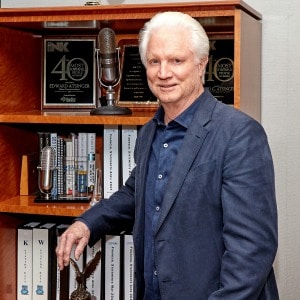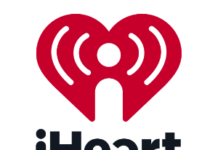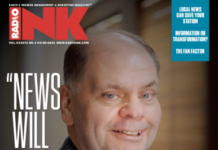
Ed Atsinger first appeared on Radio Ink‘s 40 Most Powerful People in Radio list back in 1997, one year after the list was launched. 2017 marks Atsinger’s 20th year on our list — his official ranking will be revealed when our issue comes out on July 24. And by looking at this picture, it’s clear Atsinger is going to need a bigger shelf for all of his awards.
In the late ’90s, Salem owned only 44 radio stations, but executed the same philosophy it does today, to be a leading radio broadcaster targeting audiences interested in Christian and family-themed content and conservative values. The big difference today is the evolution of the platforms. In addition to radio, Salem now has a magazine and book publishing division and a plethora of Christian and conservative websites and mobile apps.
Today, Salem has quite a few more stations than it had 20 years ago. The company owns and operates 115 radio stations, with 73 of them in the top 25 markets – and 25 stations in the top 10 markets. And the Salem Radio Network is loaded up with successful conservative talkers, including Hugh Hewitt, Mike Gallagher, Dennis Prager, and Joe Walsh. And for a few years Salem was gobbling up any websites it could afford that fit into the company’s conservative-Christian philosophy.
Atsinger has been at Salem through it all, having created the company with Stu Epperson decades ago, and taking it public in 1999. “We are most proud of the positive impact that our programming content has on the people in the communities we serve. We have our ear to the ground, and we know that this is the case. One important key to that impact is that our people care deeply about Salem’s programming across all of our formats, which results in a high degree of teamwork and cooperation to see that the mission is property executed at all levels — programming, promotion, sales, and administration.”
Here is our extended interview with one of radio’s longest-running and most powerful CEOs, Salem Media Group CEO Ed Atsinger.
Radio Ink: Are you happy with where the radio industry is today, compared to all the other media competing for the consumers’ ears and the advertisers’ dollars? How can we improve our standing with both?
Atsinger: I am extremely happy with radio’s reach, its continued dominance of in-car listening, and the nimbleness with which the best operators have incorporated the digital revolution to enhance radio’s overall product. We are certainly in a better place than much of traditional media such as the newspaper and magazine industries. I am less happy about the magnitude of the advertising dollars flowing to the various digital platforms, which has certainly resulted in much slower revenue growth for radio. We need to continue to focus our time and resources on exploiting radio’s inherent advantages of live, local, community involvement and the medium’s unique intimacy. That kind of focus will continue to build audience and get demonstrable results for advertisers.
Radio Ink: What is the best way to tell radio’s story — beyond the 90 percent-plus numbers we always hear from Nielsen?
Atsinger: Obviously radio faces a far bigger challenge convincing advertisers of radio’s ability to promote the sale of their product or service as compared to attracting audience. As you pointed out, we have the Nielsen data to confirm the size and nature of our audiences. However, at the end of the day, advertisers don’t care about the size and loyalty of our audience, they care about how listeners respond to their advertisements. We all know that radio stimulates the digital search that ultimately produces a sale. We need a more intense effort to develop the empirical case studies to prove that point definitively, while confirming the other well-established benefits that radio provides to advertisers, not the least of which is radio’s unique power to build and enhance a brand.
Radio Ink: What can everyone in radio do to better advance the industry?
Atsinger: Make the kind of investment in our businesses to leverage radio’s inherent advantages of live, real-time programming with continuous local community involvement built upon radio’s unique intimacy, especially investments that seek to integrate digital functionality into the audio experience. Those advantages need to be exploited whether are we investing in station promotion, imaging, content development, or digital functionality. Concentrating our resources strategically and capitalizing on our medium’s inherent strengths will do more than anything else I can think of to win the day for our industry.
Radio Ink‘s 40 Most Powerful People in Radio issue is out on July 24. In addition to our most popular list, the 2017 issue includes an interview with our Lifetime Leadership recipient Bruce Reese, Radio’s Top 40 Advertisers, Radio’s Top 40 Revenue-Producing Companies, who’s made our Top 40 list the most times, a killer radio success story, all of our regular columns and much more.
To subscribe to Radio Ink in time to receive our 40 Most Powerful People in Radio issue, downloaded directly to your device, GO HERE.






Interesting that Atsinger recommends live local programming. No doubt, he is sincere. But 80%+ of Salem radio stations’ programming is either right wing syndicated talk shows or program block time sold to pastors raising money. Other than morning drive time, there is very little, if any, live real time programming on Salem stations. Even their Christian music stations voice track in many dayparts. …Interesting irony.